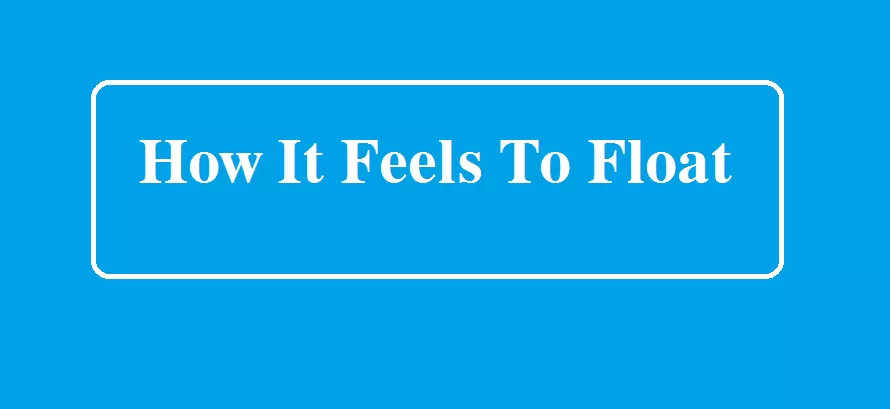How It Feels To Float
Once you step into the float tank, you’ll feel a sense of weightlessness that’s hard to describe. The high concentration of Epsom salt in the water makes the body completely buoyant, allowing for complete relaxation. For many people, this is the first time they have felt truly weightless since their time in the womb.
After a few minutes of settling into your float position (usually with your arms at your sides and legs spread apart), you will find yourself drifting into deep relaxation. You might experience a sense of detachment from your surroundings and even from your own body. This feeling can be likened to meditation but without any effort on your part.
As you float effortlessly, all parts of your body will be able to fully decompress and relax. There is no pressure or tension on any joints or muscles – something particularly beneficial for those dealing with chronic pain or recovering from an injury. Overall, floating provides an unparalleled level of physical and mental relaxation that’s hard to replicate through other means.
How to swim
Floating is one of the most essential swimming skills. It is a feeling that can be both calming and exhilarating, and it’s one of the first things you should learn when starting to swim. To achieve this, you need to relax your body and calm your mind. Start by taking a deep breath in, holding it for a few seconds, and then slowly exhaling.
As you exhale, allow your body to sink down into the water while keeping your head up. Once you feel yourself losing buoyancy, start to breathe again while gently kicking with your legs to keep yourself balanced. You can also use your arms by extending them out in front of you or placing them at your sides.
Once you have mastered floating on your back or stomach, try doing so with minimal movement for an even more relaxing experience. Maintaining proper form while floating will not only help improve overall swimming ability but will also provide a sense of confidence and comfort in the water. Be patient with yourself as learning how to float takes time and practice!
What does it feel like to float?
When you float, the sensation is incredibly relaxing. You feel weightless and free from any pressure or stress. There’s a sense of calmness that comes over you as your body becomes suspended in the water. Your breathing slows down, and your mind clears, allowing for a peaceful escape from the outside world.
As you float, your muscles start to loosen up, and tension melts away from your body. It’s almost like being in a meditative state where you’re fully present in the moment but detached from everything else around you. The water supports your body, so there’s no need to worry about sinking or struggling to keep yourself afloat.
The feeling of floating is unique because it can be both calming and invigorating at the same time. It’s an opportunity to disconnect from everything else and focus solely on yourself and how it feels to be weightless in the water. Whether you’re floating on your back or stomach, with arms outstretched or curled up into a ball, floating offers a sense of tranquility that cannot be replicated anywhere else.
Are there any benefits to floating?
Floating is an experience that can transport you to a state of deep relaxation and calmness. The sensation of weightlessness allows your body to let go of tension, and as a result, it can provide significant benefits for both your physical and mental health. When you float, the water supports your whole body, relieving pressure from your joints and muscles which in turn helps reduce pain.
The feeling of stepping into a float tank can be intimidating at first but within moments the water’s temperature adjusts to your skin temperature making it an incredibly comforting environment. With no distractions or external stimuli around, floating provides the opportunity for introspection and reflection. It’s something that people who regularly practice meditation may find particularly helpful as they will be able to clear their mind much faster.
Moreover, research has shown that people who float have reported lower levels of stress and anxiety while experiencing increased feelings of well-being after just one session. This makes sense given that floating triggers the production of endorphins – nature’s mood-boosting chemicals – which promote relaxation, reduce pain perception and create a feeling of euphoria. All in all, there are numerous benefits associated with floating making it worth considering adding to your wellness routine.
FAQs
What is the book “How It Feels to Float” about?
“How It Feels to Float” by Helena Fox is a young adult novel that explores the struggles of mental illness and grief. The story follows a 17-year-old girl named Biz who struggles with anxiety, depression, and hallucinations. She also deals with the aftermath of her father’s death, which has left her feeling lost and disconnected from the world around her.
Is this book appropriate for all ages?
A: While “How It Feels to Float” is classified as a young adult novel, it addresses mature themes such as suicide, self-harm, and sexual assault. As such, parents or guardians should use their discretion when deciding if this book is appropriate for younger readers.
What sets this book apart from other young adult novels?
One unique aspect of “How It Feels to Float” is its portrayal of mental illness in a nuanced and authentic way. The author draws on her own experiences with mental health issues, which adds depth and realism to the story. Additionally, the novel emphasizes the importance of community support in coping with mental health challenges rather than relying solely on medication or therapy.










